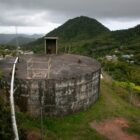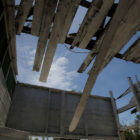
Of the 242 community aqueduct systems legally registered in Puerto Rico as franchises, 31% have not requested recovery funds for the damages caused to infrastructure by Hurricanes Irma and María in September 2017, according to data from the Government’s Central Office of Recovery, Reconstruction and Resiliency (COR3). Although the reasons are different for each community aqueduct, not owning the land where the equipment and wells are located, the number of documents that the federal government requires, and the lack of orientation to those who administer these systems, are some of the causes for which these entities fall short of the requirements to apply for funds from the Federal Emergency Management Agency (FEMA) and COR3. As of this week, a total of 167 community aqueducts have requested recovery funds, said COR3 press spokeswoman Maura Ríos Poll. Of these, 150 have already gotten the obligation of the money, according to data from the COR3 website, and 21 of those have not yet received any disbursement. There are 242 community aqueducts recognized as franchises by the Department of Natural and Environmental Resources (DRNA, in Spanish).





